Are you looking for the best places to visit in Croatia in winter? Read on for a comprehensive guide to visiting the country in the cooler months!
Situated in a prime destination on the Adriatic Coast, Croatia is a much-loved European country in the summer.
But it’s not just a warm-weather destination. The country has a rich history, local traditions, lots of nature that’s beautiful in all seasons – and in the south there’s even some winter sun.
Read on, as we detail the best places to visit in Croatia in winter!
This blog post was written by Andrej, our Balkans expert and local.
What’s Croatia in winter like?
With Croatia being such a popular summer destination, you might be unsure whether it’s even worth a visit in the winter months.
But most tourist destinations are fully open during winter and provide the same, if not better, experiences than the peak tourist season.
Weather
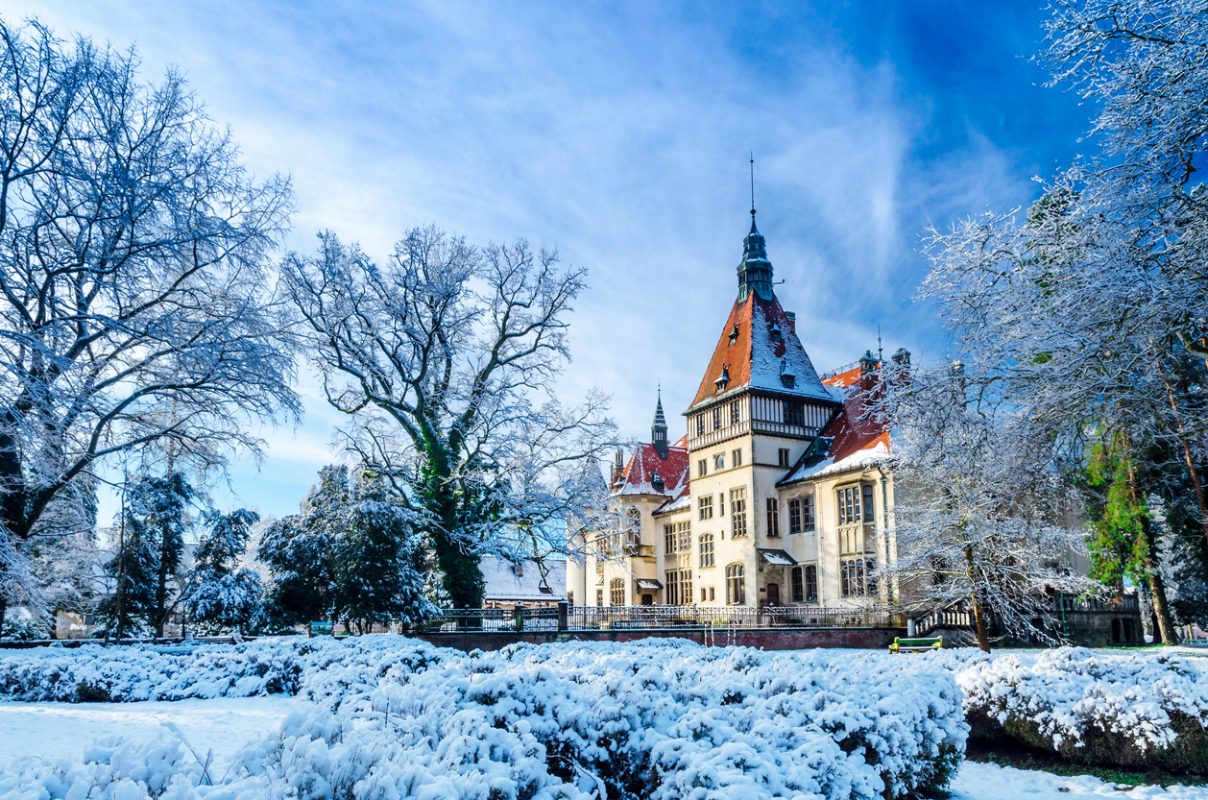
Even though it’s colder than the summer, many cities on the Adriatic Sea have much milder weather than most of this part of Europe, with temperatures sometimes even going to 20°C/ 78°F!
The water temperature is mild, making the sea swimmable until around November when it gets a lot cooler.
But some parts of the country, particularly the inland area around Zagreb and the skiing resorts, can be very cold and snowy.
Pack a heavy coat, scarf and gloves if you’re visiting these regions!
Crowds
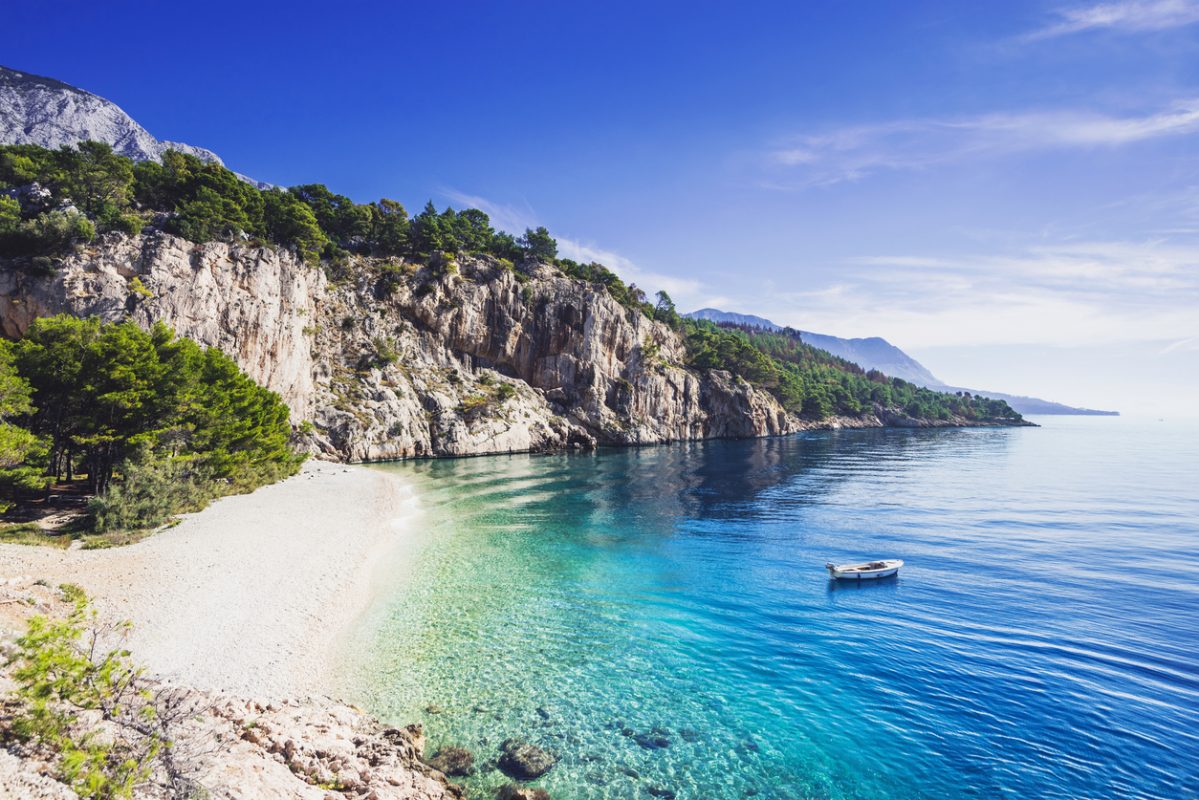
As you’d guess, Croatia is nowhere near as crowded in the winter months!
This means that you can experience all the tourist attractions without having to pre-book them or wait forever in lines.
There are no cruise ships with thousands of passengers lining the Dalmatian Coast. All-inclusive hotels are shut for the winter. Planes still arrive regularly, but they are nowhere near as busy.
If you want peace and quiet and yearn to explore places at your own pace, without feeling like you’re in a rush, Croatia in winter is idyllic.
Price
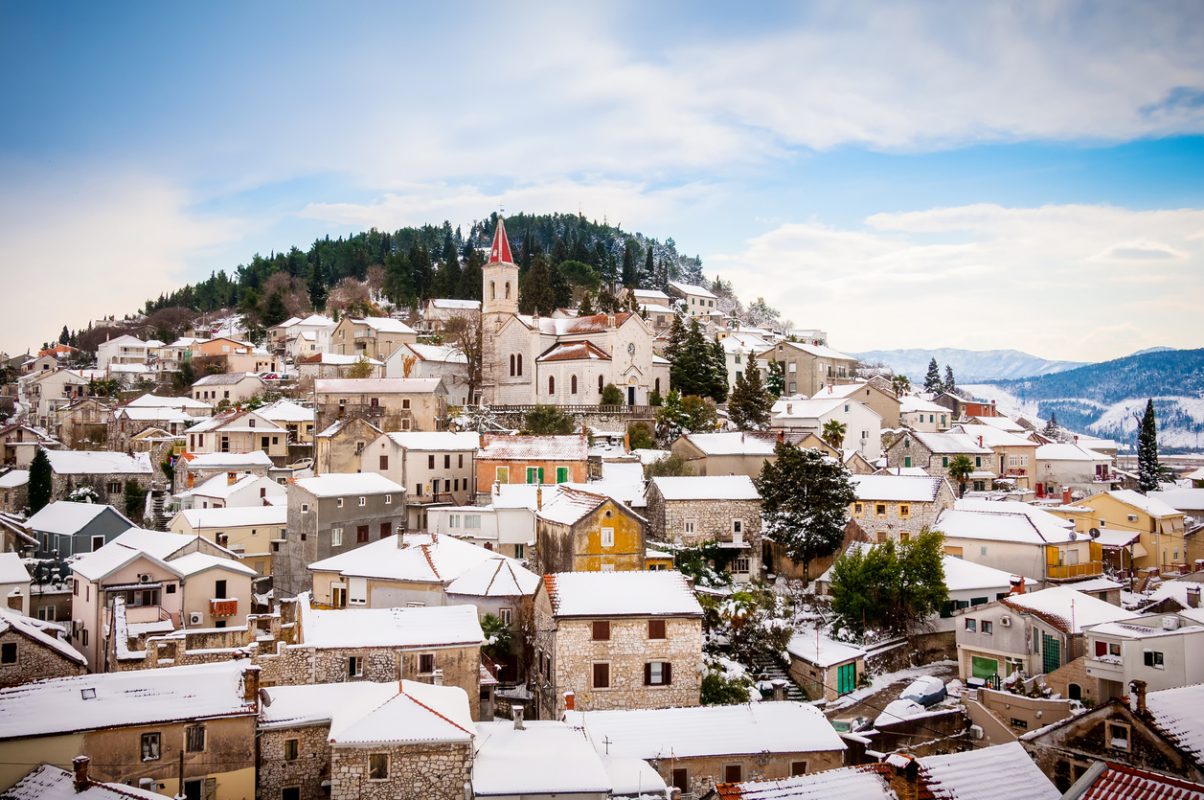
The prices are also a lot cheaper as locals have to adjust to having fewer tourists than in the warmer months.
This means that you can get great deals on accommodation and tours.
The cafes and restaurants also lower their prices a bit, so you can experience Croatian cuisine really cheaply.
Plus, flights in are generally a lot more affordable too – so it’s the ideal time for budget travelers.
What’s the weather like in Croatia in winter?
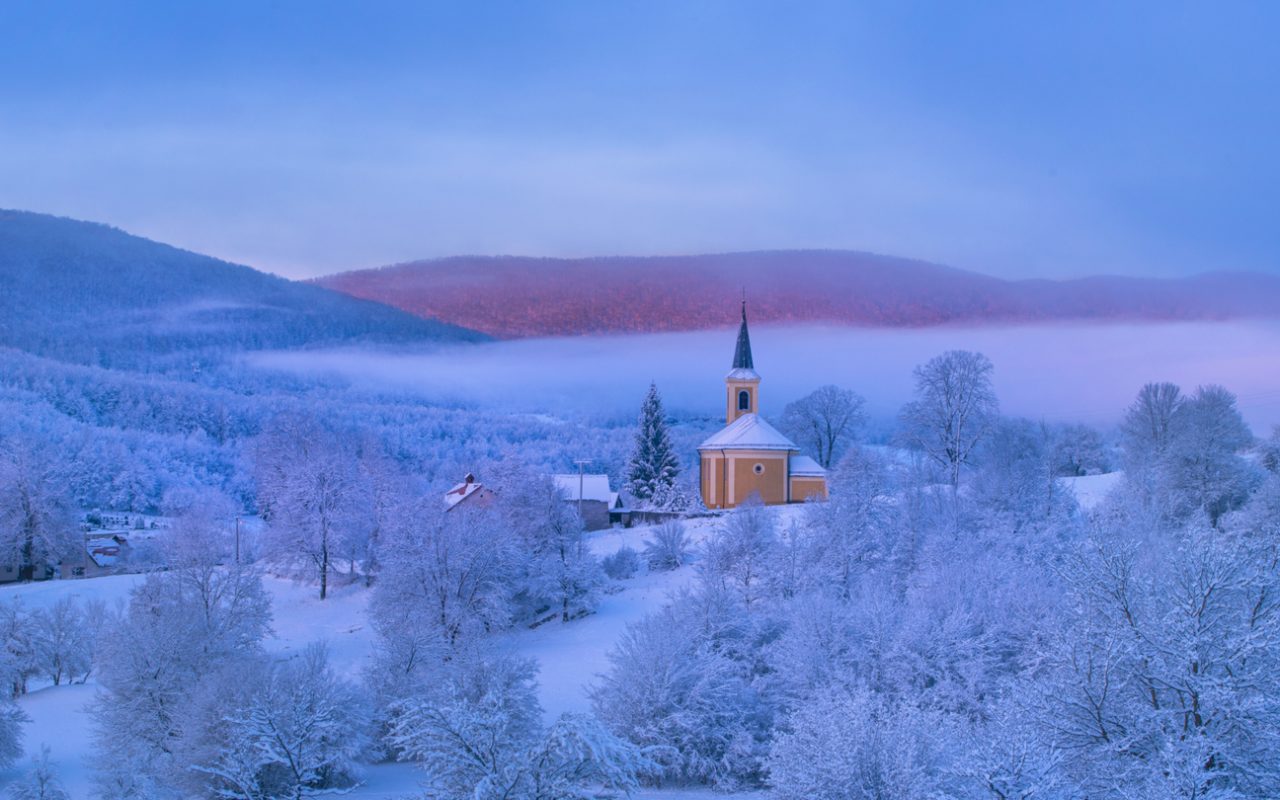
Croatia is mainly known as a warm summer destination, but parts of it become pretty cold during winter thanks to its location in the Balkans.
The temperatures differ a lot between continental and coastal destinations, with those closer to the sea experiencing higher temperatures.
The temperatures on the coast are usually around 5°C to 10°C (41°F to 50°F) and sometimes higher in the south whereas in the rest of the country the temperatures are between 0°C and 5°C (32°F to 41°F) although there are both colder and warmer days during the season.
Rain and snow are also fairly common, with snow mostly being in December and January, especially in the mountains.
Other months experience a lot more rainfall and continental locations are the wettest.
Places to visit in Croatia in winter
Zagreb

The best place to start exploring the country is its capital city, Zagreb; a perfect place for a winter city break!
Being the biggest city in the country, there’s a lot to see and explore, such as the magnificent Cathedral and Lotrščak Tower, the Grič Tunnel as well as the highly popular Museum of Broken Relationships.
The city also has a Christmas festival that lasts from the beginning of November to the beginning of January – it’s called the Advent in Zagreb and it makes this capital a fantastic city to spend the festive season in!
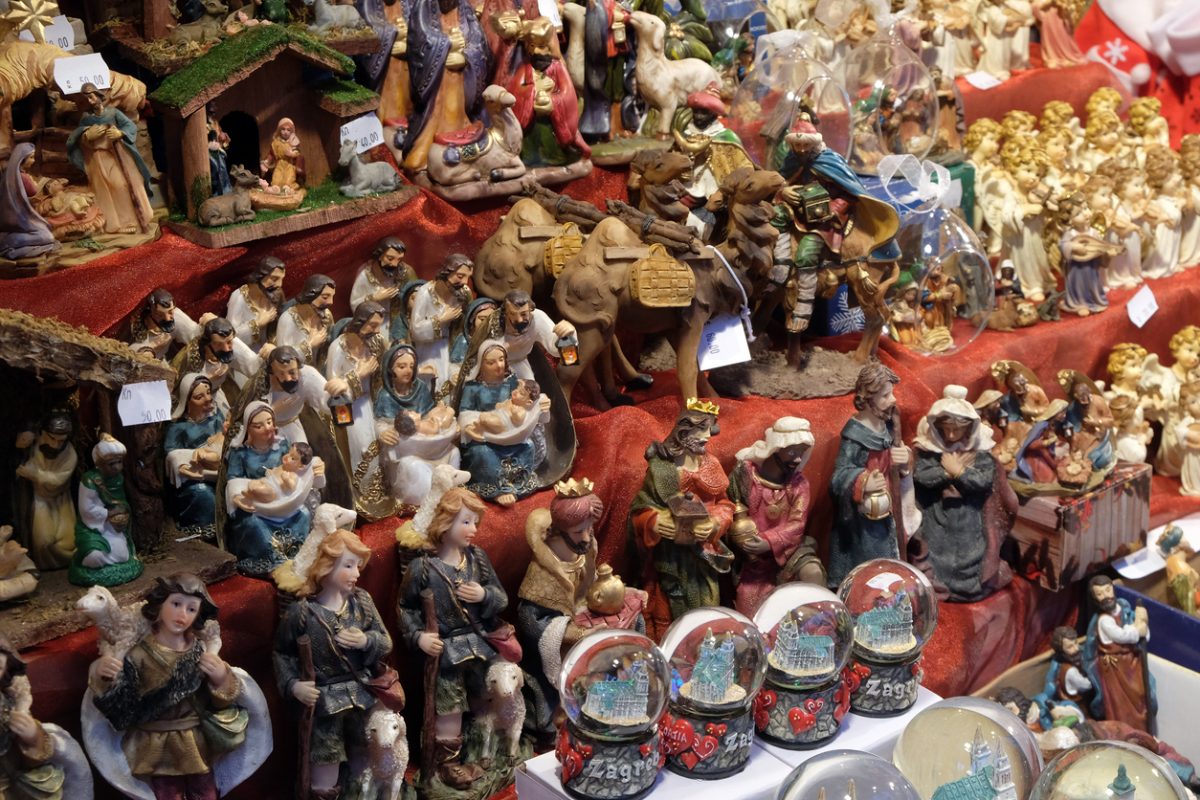
Advent features all sorts of activities, like a Christmas market and a lot of concerts by local artists.
You can also take a stroll through Tkalčićeva street, which is filled with cafes and restaurants and enjoy some traditional Croatian dishes.
The street is famous for nightlife too, as there are a few great bars with nightly DJ performances.
Here’s our full guide to visiting Zagreb in winter.
Dubrovnik
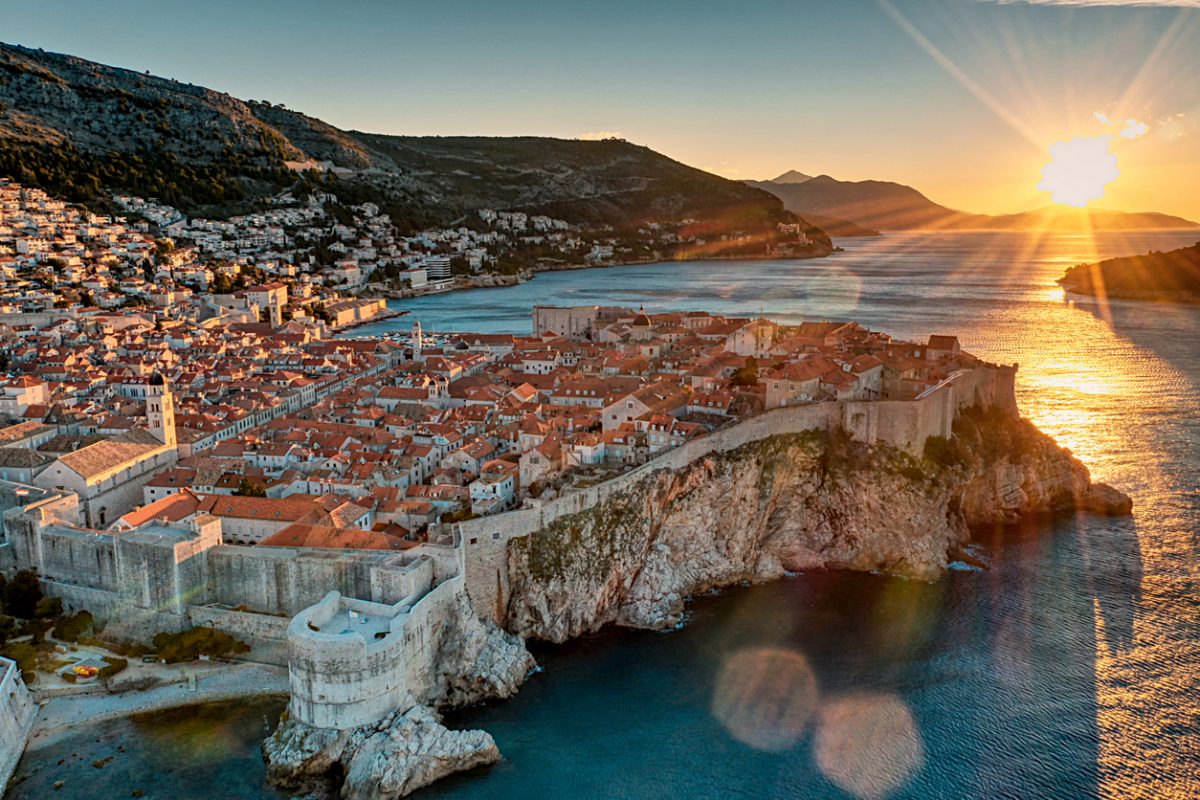
If you’re not a fan of the cold weather and want to explore coastal cities, Dubrovnik’s waiting for you!
Thanks to its Southern location, this beautiful city is much warmer than the rest of the country, with average temperatures being around 10°C to 15°C (41°F to 59°F).
In fact, if you’re looking for some winter sun, this city has near-perfect weather.
Winter is the perfect time to explore all the bucket list tourist attractions such as the Dubrovnik Walls and the Game of Thrones tour. These attractions are heaving in the summer months but much quieter come winter.
If you enjoy beautiful architecture and history, don’t miss the Dubrovnik Cathedral and Treasury, Sponza Palace and the Rector’s Palace.
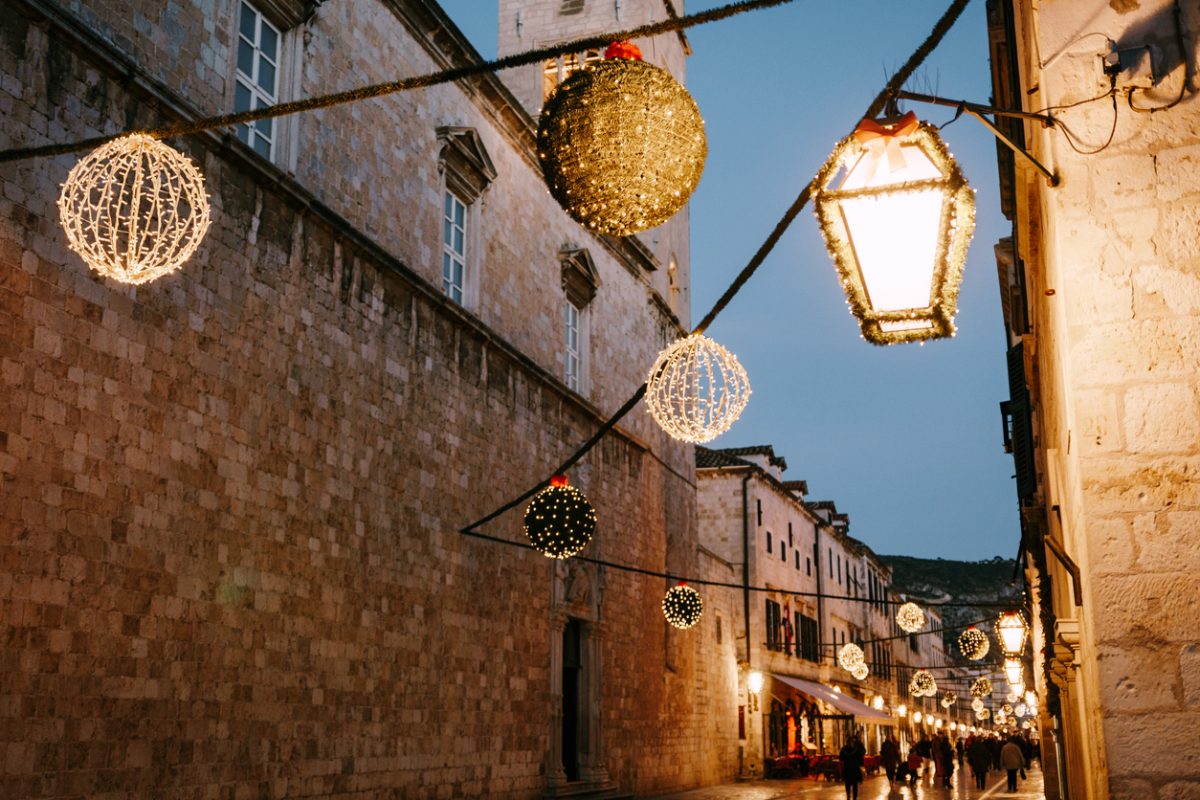
Once you’ve wowed at the charming UNESCO-listed city centre, head to some of the best destinations outside, such as the island of Lokrum and Dubrovnik’s popular cable car.
In the evening, stroll through Stradun street and enjoy delicious food at one of its numerous restaurants.
There are a few festivals in Dubrovnik in winter, including Dubrovnik Carnival which happens in the first half of February and Kolenda and Dubrovnik Winter Festival before Christmas.
Here’s our full guide to visiting Dubrovnik in winter.
Split
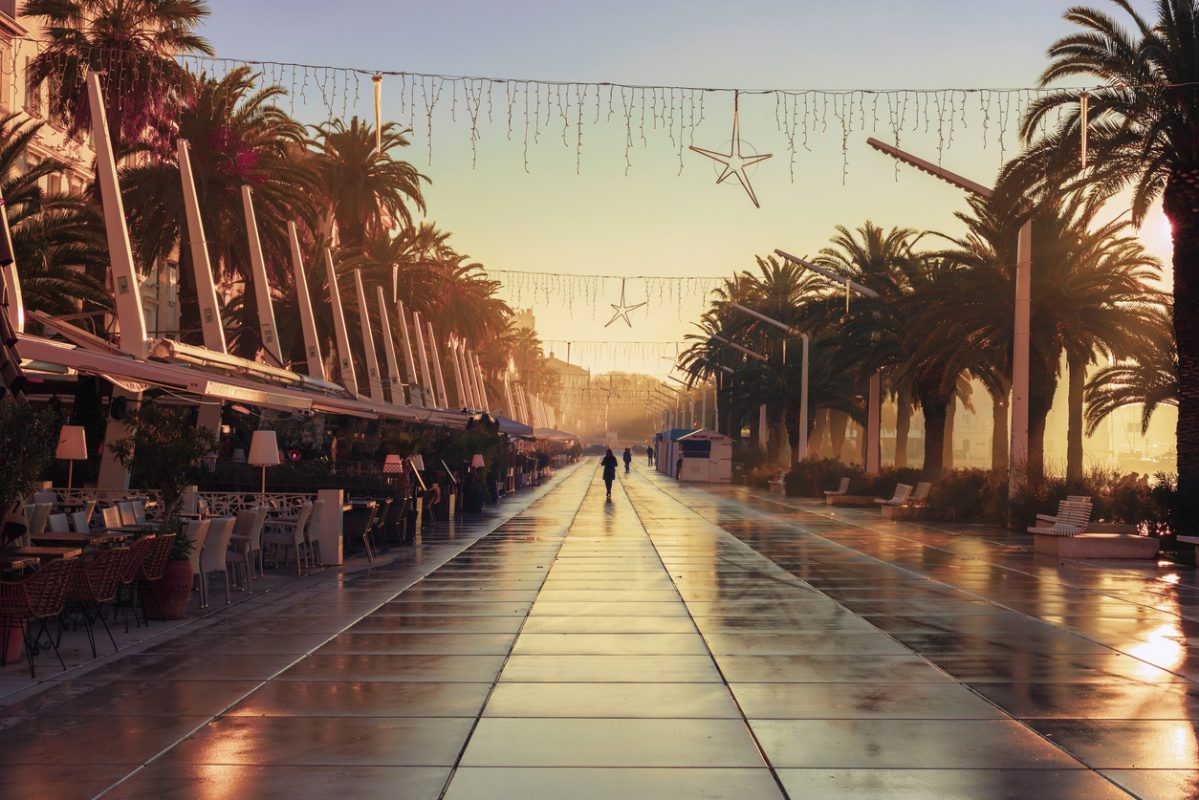
Split’s probably best known as a summer holiday destination; popular with partygoers who flock to its bars and beaches, although there are plenty of things to do in Split with teenagers and kids as well.
And you can enjoy most of these attractions during winter!
The beaches may be a bit chilly, but you can explore historical destinations like Diocletian Palace and the Bell Tower with barely any tourists.
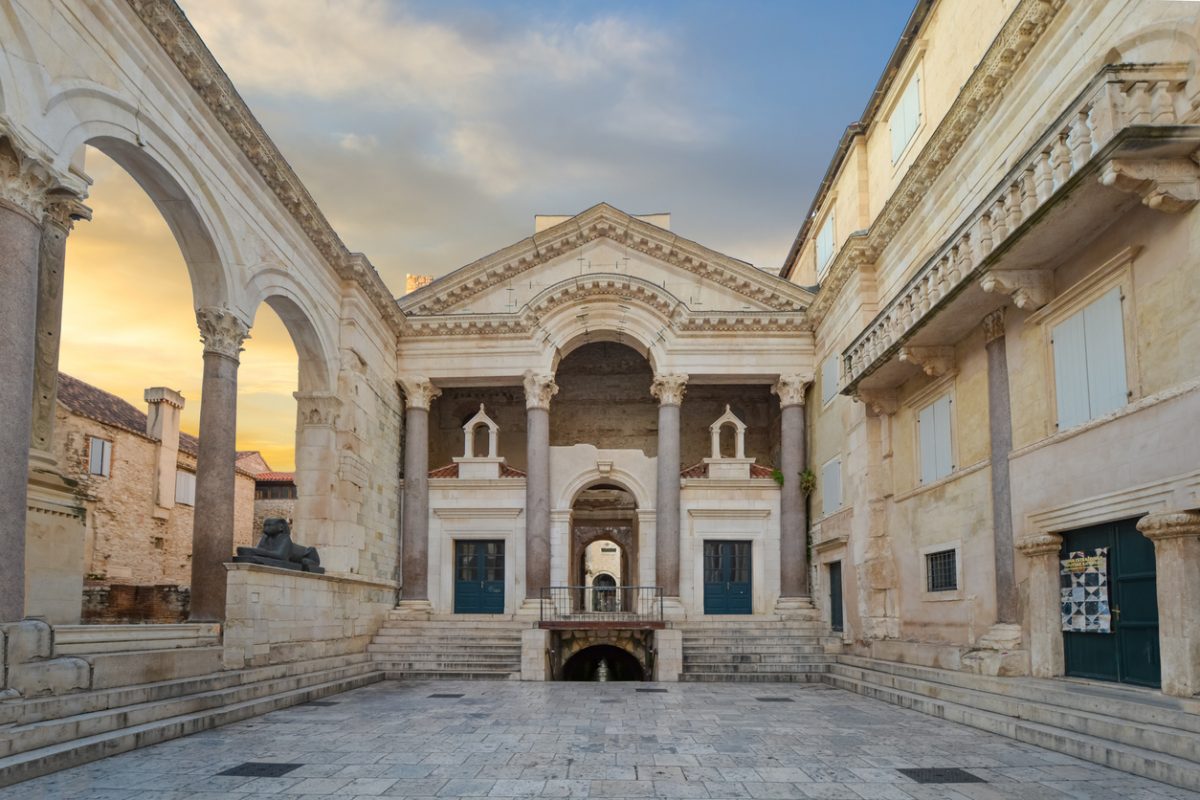
For all the Game of Thrones fans, Dubrovnik isn’t the only filming location in Croatia – some scenes were filmed in the Diocletian Palace!
The city is also in full festive spirit during the winter, thanks to the Christmas market where you can enjoy all sorts of traditional Croatian winter food and beverages.
Plitvice Lakes National Park
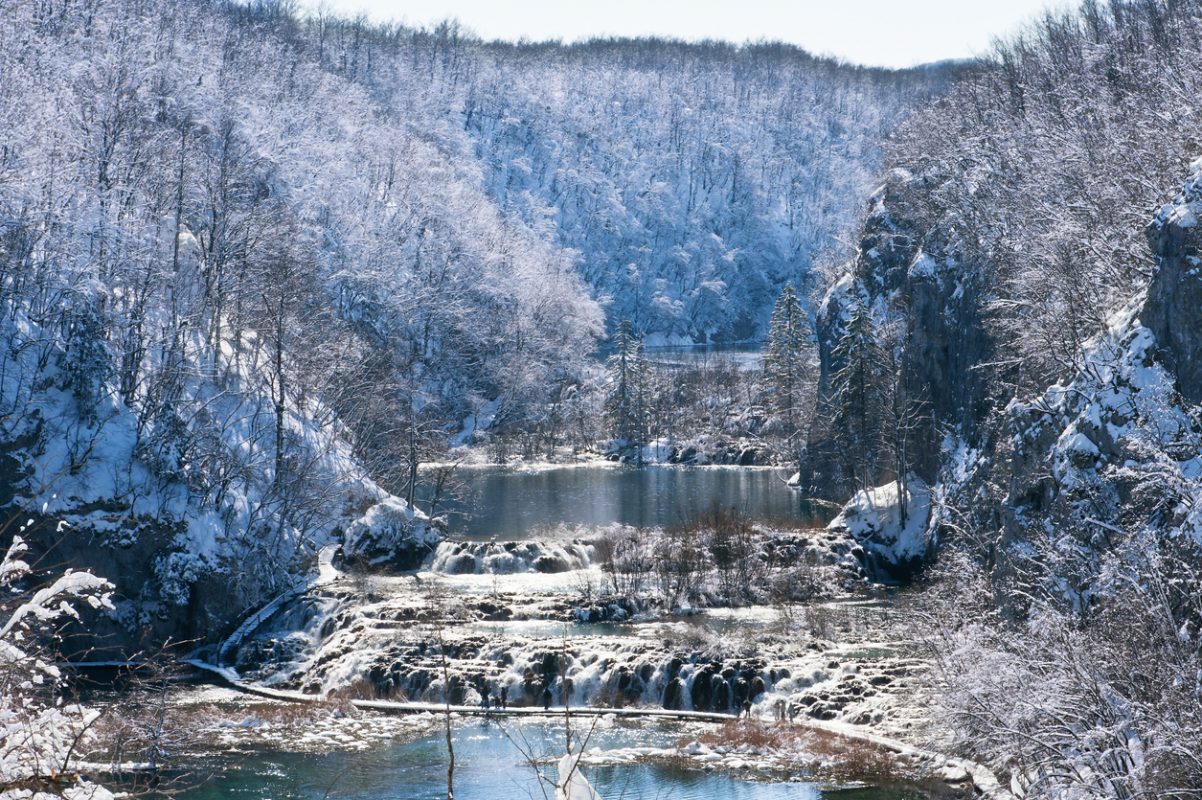
Regarded as the most beautiful national park in Croatia, Plitvice Lakes is even more stunning during winter.
Located a few hours from Zagreb, the national park turns into a scene from Frozen during winter, thanks to lakes freezing over and the waterfalls completely turning into ice.
It’s a sight to behold, and it only occurs during the coldest months of the year, mainly December and January when the temperatures drop below 0°C/ 32°F.
The surrounding nature gets covered in layers of snow, complementing the frozen waterfalls perfectly.
You can visit Plitvice Lakes National Park as a winter day trip from Zagreb or Split.
Hvar

Hvar is one of the most beautiful islands in Croatia’s Dalmatian region.
Despite being mostly popular in the summertime, it boasts a lot of history and there are plenty of places to visit no matter the season.
You can start by seeing St. Stephen’s Square, a huge pedestrian zone with cafes and restaurants.
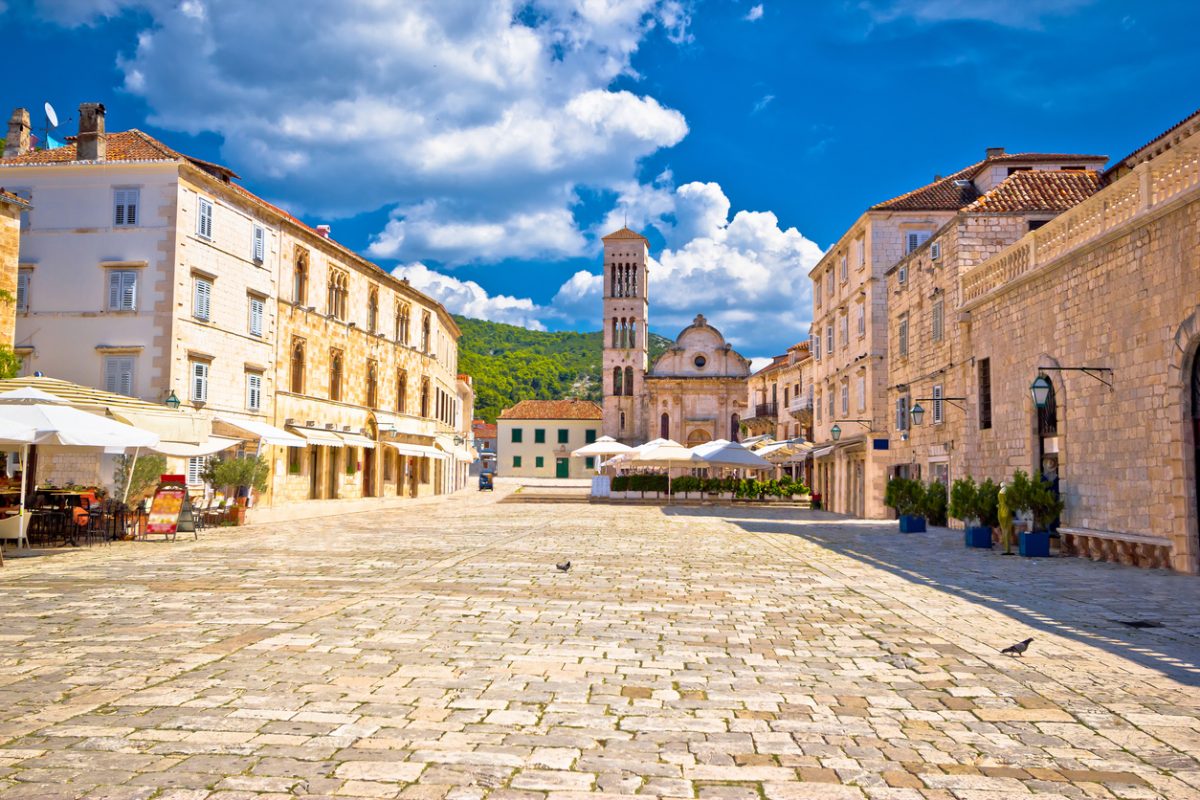
Here, you can also find St. Stephen’s Cathedral, which is filled with various forms of renaissance art, the most famous of which is the Madonna and Child, a Venetian work from the 1220s.
Other historical destinations on the island include the Venetia Loggia and the Clock Tower, as well as the Spanjola Fortress.
Both of these are very old as they were built in the 1300s and the 1500s!
Zadar
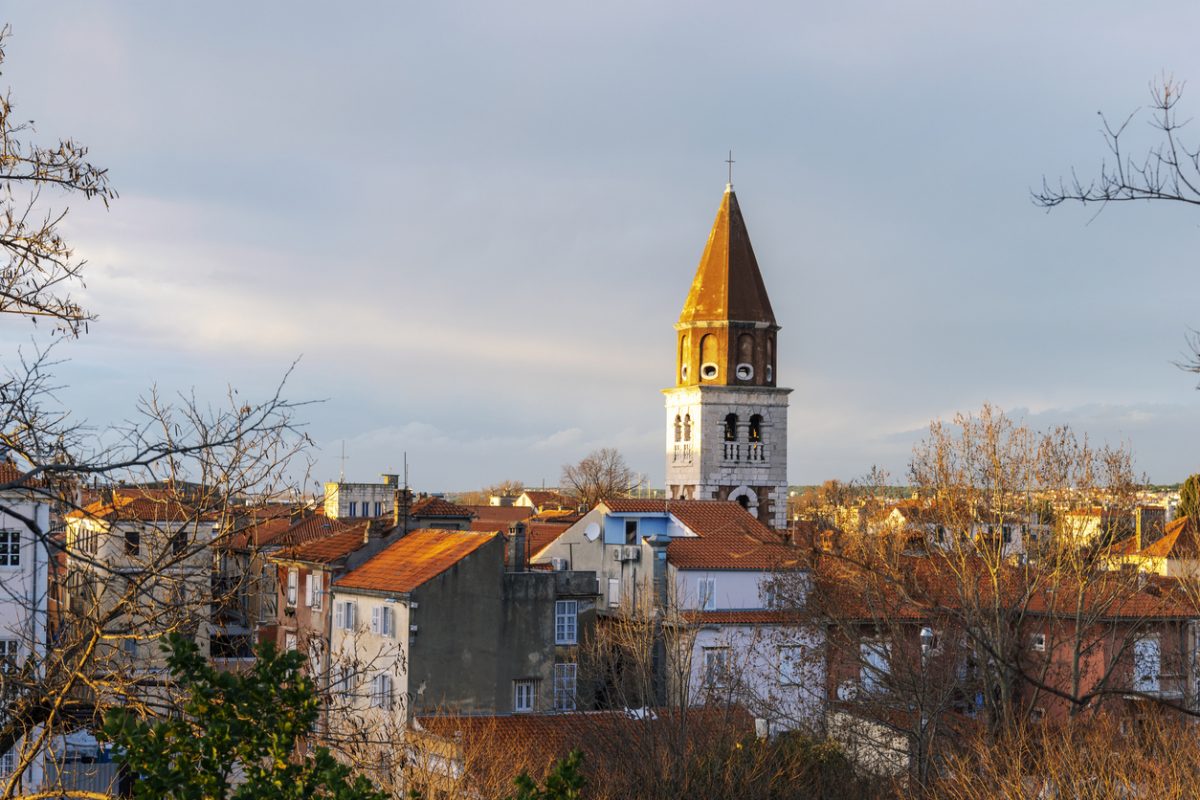
Zadar is another coastal city that doesn’t sleep during winter and has a lot to offer to any tourists.
It’s one of the oldest cities in Croatia, as it was founded by Romans and has many archeological ruins from that time, as well as some remnants of old Venetian buildings.
The city is very dry and experiences more sunny days during winter than most of the country.

The Christmas festival, Advent, gives the whole city a real festive spirit.
You can also enjoy traditional food and drinks accompanied by live music and entertainment at many locations in the city.
Krka Waterfalls
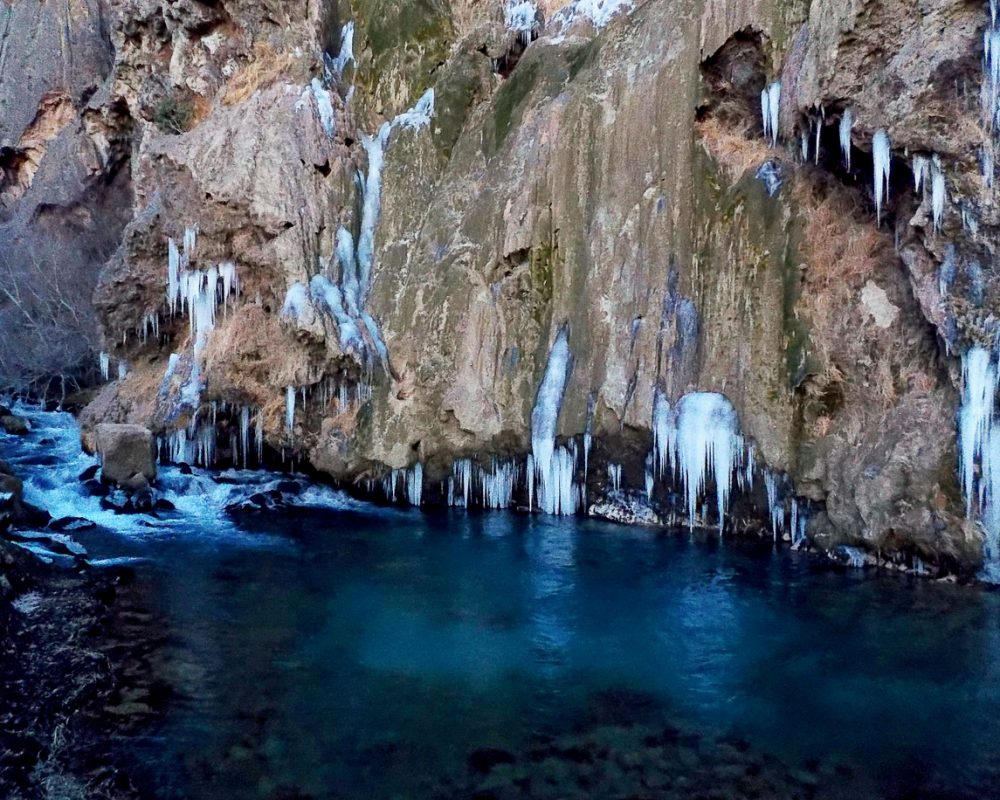
Krka National Park is often overshadowed by the Plitvice Lakes, but in some ways, it’s better!
Firstly, it’s located close to Split, so it’s ideal if you’re staying here.
The winter also makes Krka much more beautiful, thanks to layers of snow surrounding the iced-over water.
The waterfalls don’t freeze as they are bigger than in Plitvice, but the sight of ice surrounding the falls is still mesmerising.
Plus, as the park is not as popular, you’ll often get the whole place to yourself.
Zagorje region
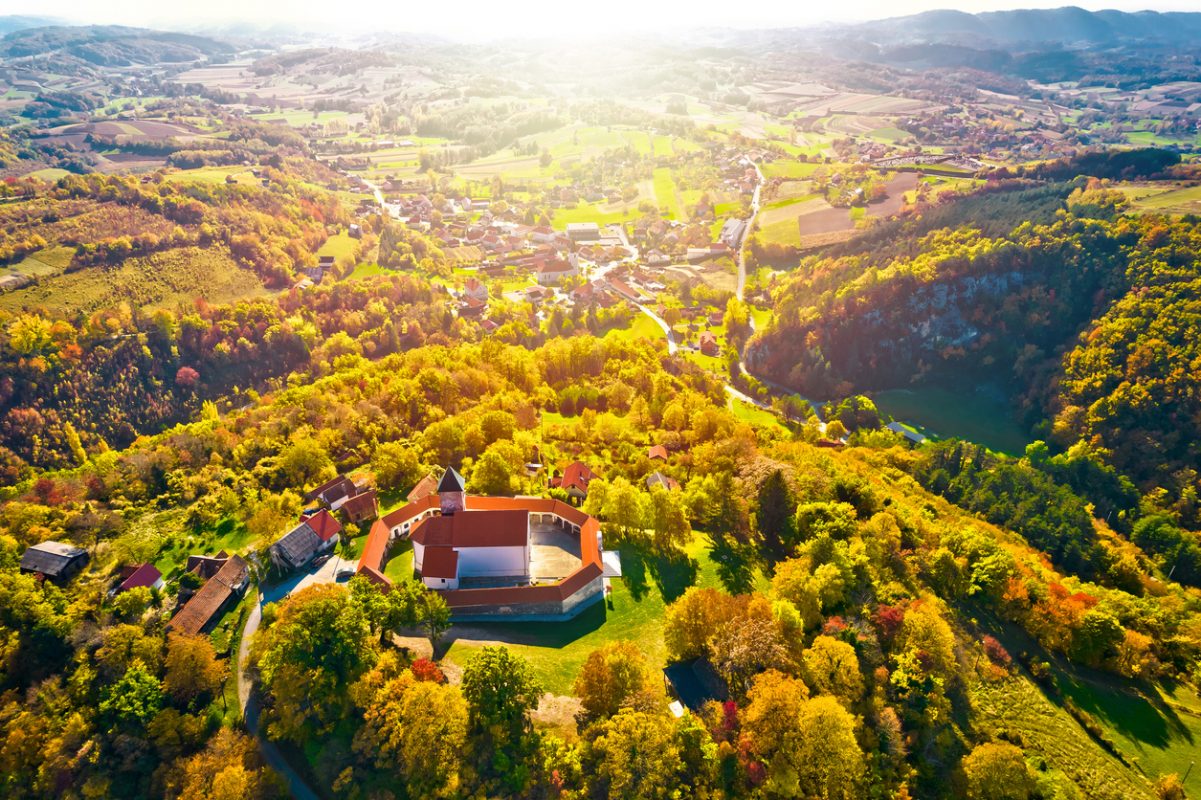
Leap into history in Croatia’s Zagorje region, where every turn looks like it’s in a fairytale.
There are a whopping 54 castles located in this region, most of which have been transformed into museums, although there are still castles kept in perfect condition.
All of the castles are worth a visit, but my favourite is Trakošćan Castle.
It is one of the oldest castles in Croatia and dates back to the 13th century. If you’re a fan of history, you can’t miss this one!
It’s also located within a beautiful park and bordered by a lake; you could spend hours walking around this beautiful nature.
Inside most of the castles, you can see a variety of antique weapons and art exhibitions, hosted by popular local artists.
In the winter, these castles are very quiet, and you can enjoy a tranquil atmosphere as you stroll around and take in the timeless beauty of these slices of history.
Šibenik

Šibenik is often considered to be a hidden gem in Croatia.
It isn’t widely known outside of the country, but it offers just as much (if not more) to see. It is the oldest settlement in the country that was founded by the Croats.
It still retains its original design, with narrow streets covered by cobbled paths, making you feel like you’ve traveled to the past.
The main tourist attraction is the Cathedral of St James, which is protected by UNESCO. It took over 100 years to be built and is the only cathedral in Europe to be fully made of stone.
A quirky feature of the cathedral is the 71 life-sized stone human heads that surround the exterior walls.
Nobody knows exactly which people they represent, but it is believed that they were the nobles at the time of building.
Rijeka
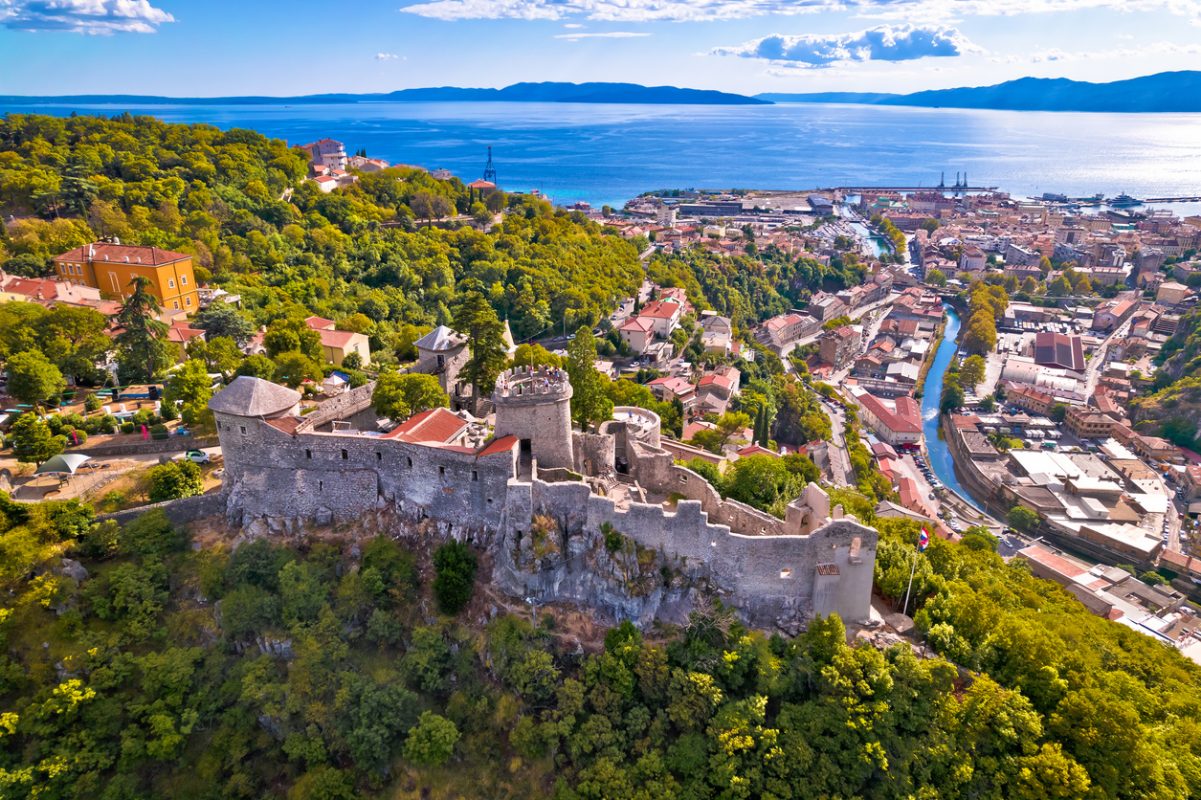
If you’re an architecture fan, you can’t come to Croatia without visiting Rijeka.
Just like Šibenik, it’s not very known outside of the country, so there aren’t a lot of tourists here – and even less so in winter.
The secret of Rijeka’s beauty is the fact that it was under Austria-Hungary’s control until WW1, so its architecture is much different compared to the rest of the country.
After you’ve admired the Austrian-style architecture, take a walk through the famous Korzo promenade and visit the Christmas market, which is full of food, beverages, and local music.
Or, visit the breathtaking Trsat Castle, which is completely covered in lights and offers a phenomenal view at night.
Rijeka was also recognized as a European city of culture in 2020, so you can guarantee that there’s loads to see and enjoy here!
Istria
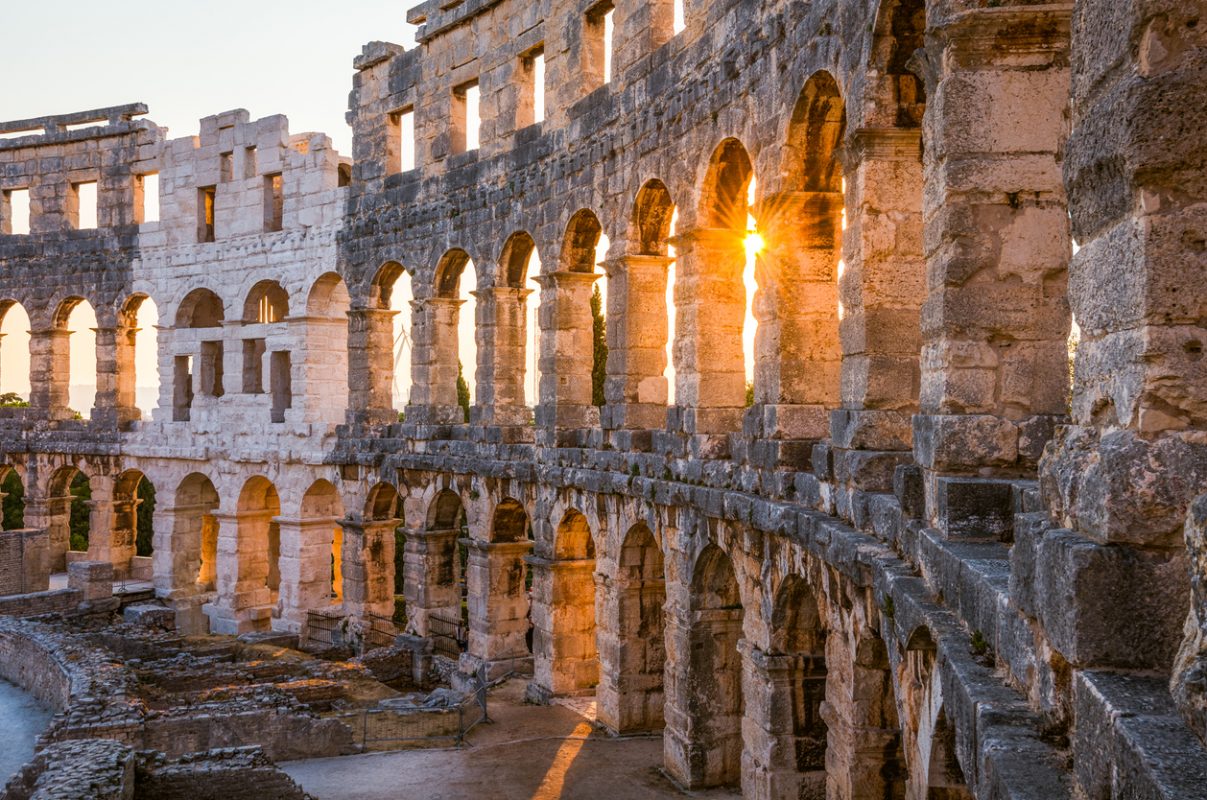
The region of Istria is a bit different compared to the rest of the country.
It wasn’t affected during the Balkans War, which means that its buildings and historic archeology remain unscathed.
The region boasts a lot of incredible tourist destinations, from beautiful harbors in Rovinj to the unofficial smallest city in the world – Hum, which has only 22 inhabitants.
It’s also one of the easiest areas to reach in the country, thanks to its proximity to Italy.
Istria is home to the city of Pula with a famous Roman amphitheater, the Arena, which is one of the best-preserved archeological locations in the world.
Skiing Resorts
When you think of a skiing vacation, you might not even consider Croatia.
In fact, while it does have a couple of resorts, I’d recommend heading to Serbia or Bulgaria for a snowy trip.
However, if you’re traveling around the country in the winter months anyway, you might want to do a short trip to the following ski resorts!
Sljeme Ski Resort
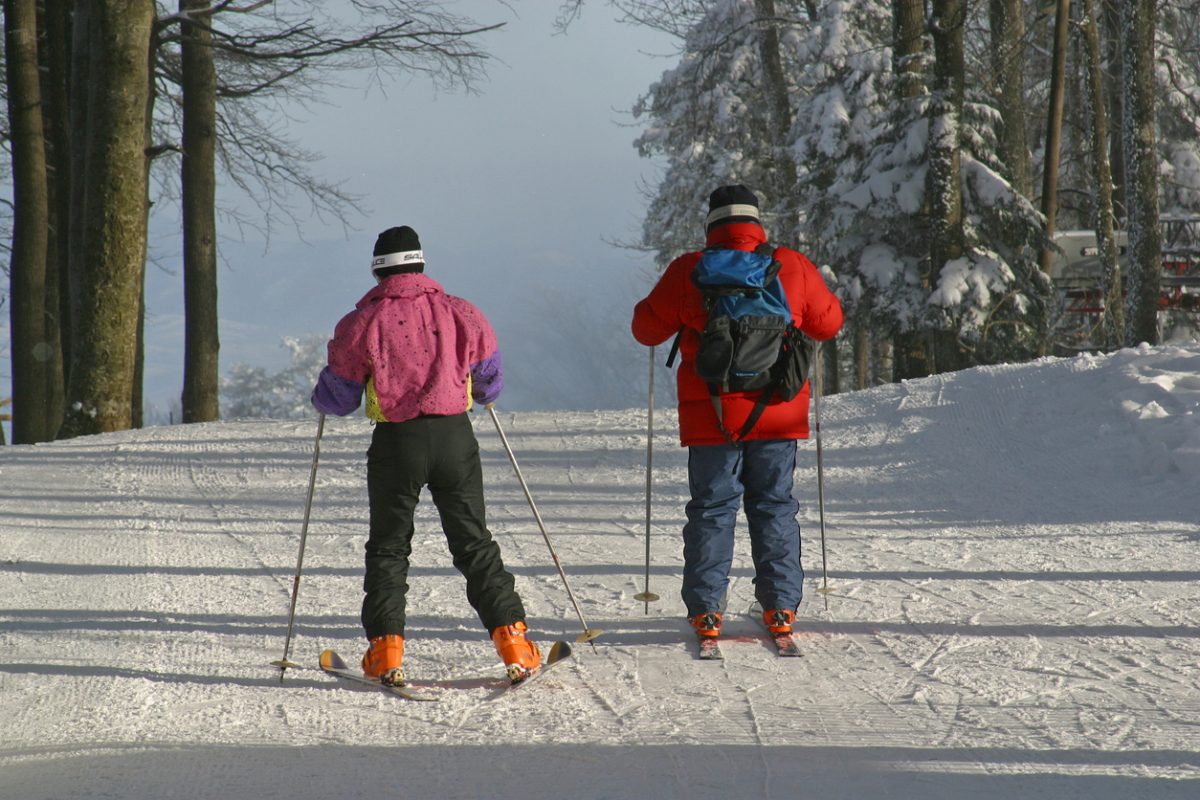
If you’re staying in Zagreb, the Sljeme Ski Resort is just a couple of kilometers away.
It is more suited for experienced skiers as most slopes have a difficult rating, but there are also a few beginner ones that are good for practicing.
Ski Resort Platak
Ski Resort Platak is perfect if you’re inexperienced, as the majority of its slopes are either easy or intermediate.
There are also about 5 kilometers (3 miles) of these slopes.
Unfortunately, it doesn’t have any difficult-rated slopes, so you might get a bit bored if you’re a professional.
But as I mentioned, if you’re looking for the best ski resorts in the Balkans, it’s much better to consider Serbian or Bulgarian options, as they are much bigger and have a great skiing culture!
The best guide to Croatia in winter!
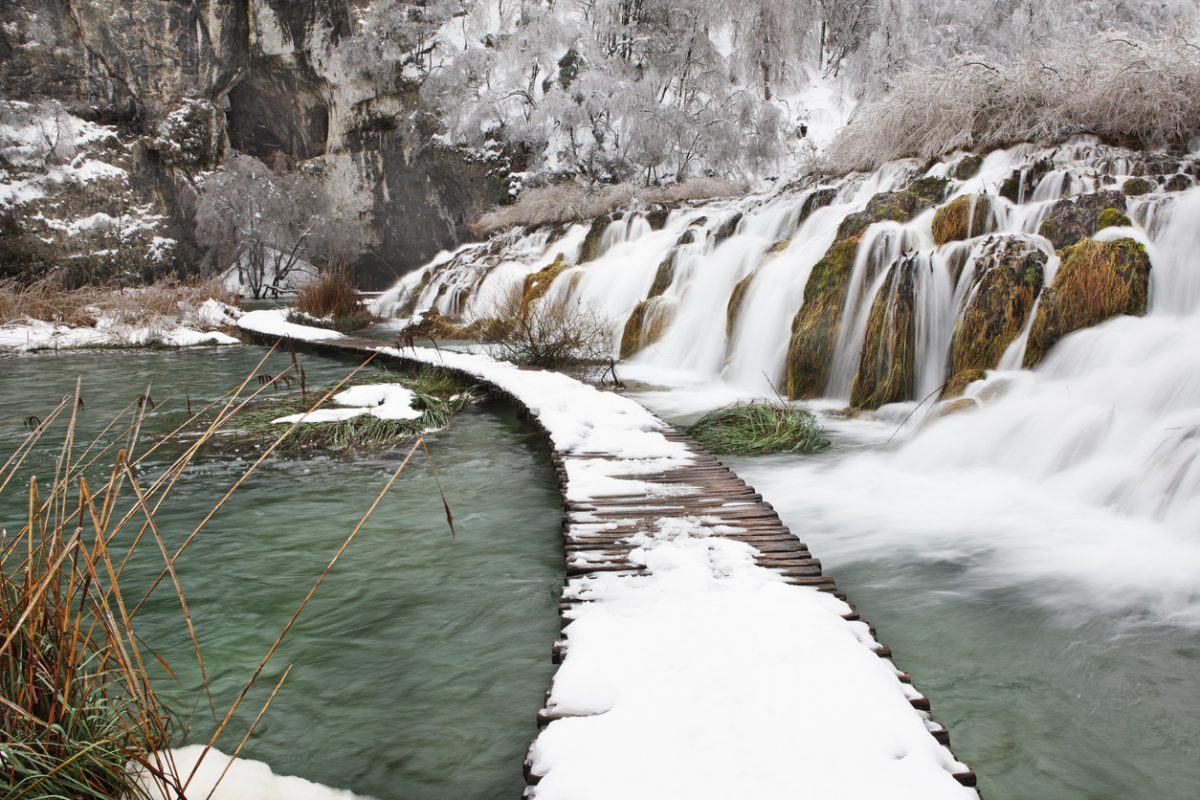
Croatia may not jump out to you immediately as a winter destination, but hopefully, this blog post has demonstrated why it should be!
Visiting places like fairy-tale Dubrovnik old city out of tourist season, seeing the natural beauty of Plitvice National Park on a sunny winter day and educating yourself on the fascinating history of the Balkans in a calm and peaceful way will allow you to have so many rich and interesting experiences that just aren’t as possible in the middle of summer.
So, next time you’re looking for winter destinations in Europe, consider Croatia!

